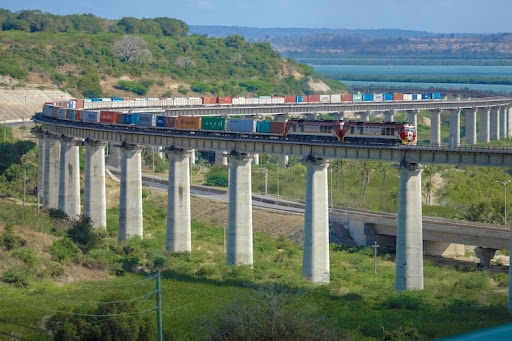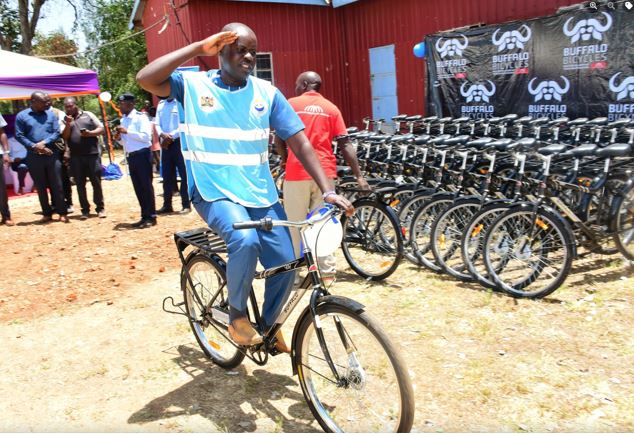
K'ONYANGO: SGR linchpin for nation's growth, development
Kenya’s SGR has been a game-changer.
CHPs support more than 100 households each, often traveling an average of four kilometres on foot daily while carrying medical supplies and registers.
In Summary

Community health promoters form the backbone of primary healthcare workers in many rural areas.
They are charged with the monumental task of delivering essential health services directly to people’s homes, where they are often the first and only point of contact between communities and the health system.
Yet, their work is hampered daily by one of the most pressing but overlooked challenges in rural health service delivery; mobility.
Across the seven subcounties in Busia, CHPs support more than 100 households each, often traveling an average of four kilometres on foot daily while carrying medical supplies and registers.
The terrain is tough, the sun relentless, and the roads where they exist are often rough or impassable.
During emergencies, where every minute matters, these mobility barriers can mean the difference between life and death.
“For years, CHPs have been trained, equipped with digital tools and provided stipends, but the most basic need for transportation remained unmet,” a representative from World Bicycle Relief said.
“Their potential to serve communities was limited not by skills or willpower, but by how far their feet could take them.”
On a quiet night in March, that challenge came to a head for Phaustine Omasete, a dedicated community health promoter in the Katotoi Community Unit of Teso North subcounty.
At 10 pm, there was a frantic knock on his door. Standing outside was a young couple in distress.
The 22-year-old woman had suffered a miscarriage two weeks earlier and was experiencing severe, uncontrolled bleeding.
She needed urgent medical care.
Omasete immediately assessed the situation, calmed the couple, and issued a referral to Ang’urai health centre, the closest facility with emergency services. But time was not on their side.
Just weeks before, Omasete had received a Buffalo Bicycle through a strategic partnership between World Bicycle Relief, Living Goods and the county government of Busia.
That bicycle became the lifeline. It was used to swiftly carry the woman to the health facility, where she received emergency treatment. The bleeding was controlled and by 1 am, they were back home safe and alive.
“That night showed me the power of a bicycle,” Omasete recalled.
“Without the bicycle, I don’t know what would have happened.”
His story is one of many emerging from across Busia county, where 350 Buffalo Bicycles have been distributed to 324 CHPs and 26 community health assistants (CHAs).
The goal is to strengthen primary healthcare by improving reach, speed and service delivery in hard-to-reach communities.
With bicycles, CHPs are now reaching more households per day, conducting timely follow-ups, and responding swiftly to emergencies.
In a region where malaria remains a leading health challenge, mobility has also improved delivery of test kits and medications.
According to Living Goods, CHPs currently handle 70 per cent of confirmed malaria cases directly at the household level.
The Buffalo Bicycles, built for rough terrain with reinforced frames and heavy-duty carriers are designed for durability.
A network of trained local mechanics supports ongoing maintenance, ensuring sustainability beyond initial distribution.
While the intervention is modest in design, it is profound in impact. For CHPs, the bicycles reduce physical fatigue and eliminate costly transport expenses.
For patients, they bring health services closer sometimes just in time.
“This is more than a logistics solution. It’s about dignity, access and equitable care,” World Bicycle Relief regional director Maureen Kolenyo said. "When CHPs can move faster and farther, the whole system becomes more responsive.”
Early results from the Busia programme are informing plans for scale-up across other counties.
By centering the needs of community health workers and aligning with national health goals, the programme exemplifies a sustainable model of public-private collaboration.
The message from Busia is clear: mobility is not a luxury but a necessity in rural healthcare.
Whether responding to emergencies at night or ensuring children receive timely malaria treatment, bicycles are helping CHPs close the distance between families and the health system.
For communities scattered across Kenya’s rural communities, these two wheels represent access, hope, and survival.
“In my work, every minute counts,” said Omasete. “With this bicycle, I can save time and sometimes, I can save a life.”

Kenya’s SGR has been a game-changer.